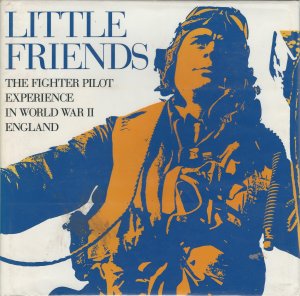Simanaitis Says
On cars, old, new and future; science & technology; vintage airplanes, computer flight simulation of them; Sherlockiana; our English language; travel; and other stuff
ENGLAND AT WAR: TWO NOTEWORTHY BOOKS
MY PRIMARY source for yesterday’s SimanaitisSays item on the Jane comics (http://wp.me/p2ETap-23p) is the book Little Friends. Plus, Go To It! is another worthy book in a similar genre.

Little Friends: The Fighter Pilot Experience in World War II England, by Philip Kaplan and Andy Saunders, Random House, 1991. Both this book and Go To It! are listed at www.abebooks.com and www.amazon.com. An amazon.link: Little Friends: The Fighter Pilot Experience in WWII England
The book Little Friends is a bibliophile’s delight, 10.5 x 10.2 in., 3.8 lbs., 256 pages of heavy stock, 120 four-color photographs, 130 black-and-white photographs, many of them full-page or two-page spreads.
One of the chapters, Flying the Mission, describes a typical day for a P-51 Mustang pilot in the 338th Fighter Squadron, 55th Fighter Group, operating out of Wormingford, Essex, about 60 miles northeast of London. It begins at 0500 hours with the CQ flipping the lights and waking everyone up. An 0615 briefing details the squadron’s mission, as escorts for B-17s bombing Berlin.
By 0830, all 48 Mustangs are in formation, climbing to 18,000 ft. over the North Sea. At 0900, they meet up with the east-bound bombers, a line so long that neither the lead nor tail can be seen.
At the rendezvous point, “Acorn Red Two was elected… to slide up to the side of the bombers and slowly rock his wings while never pointing his nose at them so as not to get mistaken for an ME 109. His job was to get close enough to the bombers to read the symbols on the vertical tail surfaces to see if they are the ones we are assigned to escort.”
At 0935, they cross the border into Germany. At 1000, the B-17s turn onto their final bomb run. Momentarily, the Mustangs have nothing to do but watch the bombers encounter murderous flak. By 1135, their escorting task resumes as far as the Dutch border.
At 1150, on their way home, Acorn Blue is successful in seeking targets of opportunity. A brief battle with a trio of ME 109s ends with our narrator shooting down one of them. “As I pass over the wreckage, the pilot is climbing out and waving at me. Acorn Blue Three gets one of the other ME 109s and Acorn Blue Four gets the last one.”
Remaining fuel supply forces them homeward at 1220. At 1300, “I take off my oxygen mask and light a cigarette, then eat my two ‘in flight’ candy bars.”
By 1340, Acorn Blue flight is back on the ground. Our narrator’s crew chief will have another swastika painted on the plane by nightfall. A detailed debriefing, some down time and dinner follow.

Well earned down time for the 4th Fighter Group at Debden, about 45 miles northeast of London. Image from Little Friends.
At 2140, the base is put on Red Alert as V-1 buzz bombs fly over on their way to London. “This is our signal for us to load our GI .45 pistols and run outside.
“No one has ever hit one as far as we know….”
Great wartime reportage.

Go To It! Working for Victory on the Home Front 1939 – 1945, by Asa Briggs, published by Mitchell Beazley in association with the Imperial War Museum, 2000.
Whereas Little Friends focuses on the fighter pilot and his relationship to wartime England, Go To It! takes this broader perspective from the onset. The book’s chapters include Waste Not a Minute (“factories as the arsenals of democracy”), In the Fields (“Lend a hand on the land”), Down the Mines (“Fuel is power”) and On the Move (“Is your journey really necessary?”).
Each chapter offers an overview as well as specific examples of English wartime experience, illustrated with photos, posters and other art. For instance, one striking change in Britain’s wartime culture was the emergence of “womanpower.”

Ernest Bevin, Minister of Labour, talks with Miss Ruby Loftus at the Royal Ordinance Factory in 1943. Image from Go To It!
Winston Churchill chose Ernest Bevin as Minister of Labour in his wartime coalition government. The resulting conscription of men—and women—came to be known as Bevin’s Army.

Ruby Loftus screwing a breech-ring, 1943, painting by Dame Laura Knight, inspired by the photo above. Image from Go To It!
Dame Laura Knight was the first woman to be named a full member of the Royal Academy (in 1936). She was also to illustrate the Nuremberg Trials at war’s end.
To paraphrase Winston Churchill, never was so much owed by so many to so many others. These two books make this clear. ds
© Dennis Simanaitis, SimanaitisSays.com, 2014


Having operated a lathe similar to Ruby’s in my younger days, a shop foreman’s booming reaction would likely go like this – RUBY, I don’t care if they are taking your picture, “G E T T H O S E S A F E T Y G L A S S E S O N !”
I’ll bet Winston would have agreed.
Thanks Dennis, for this good work.